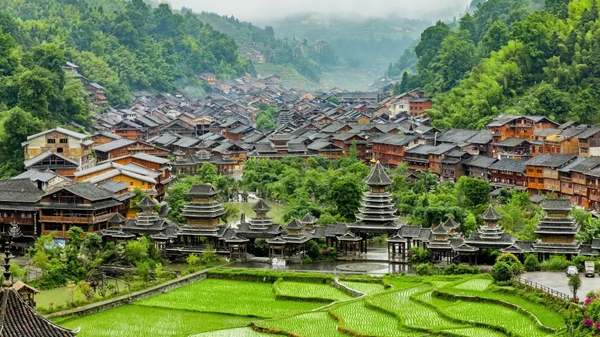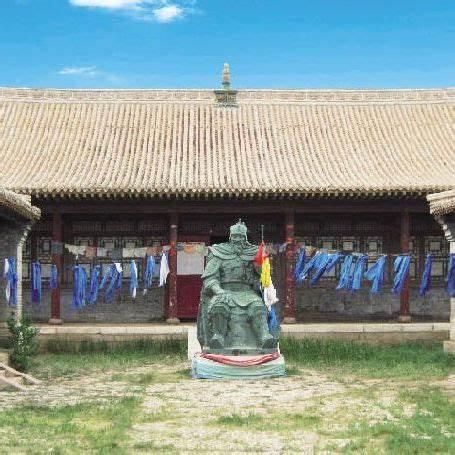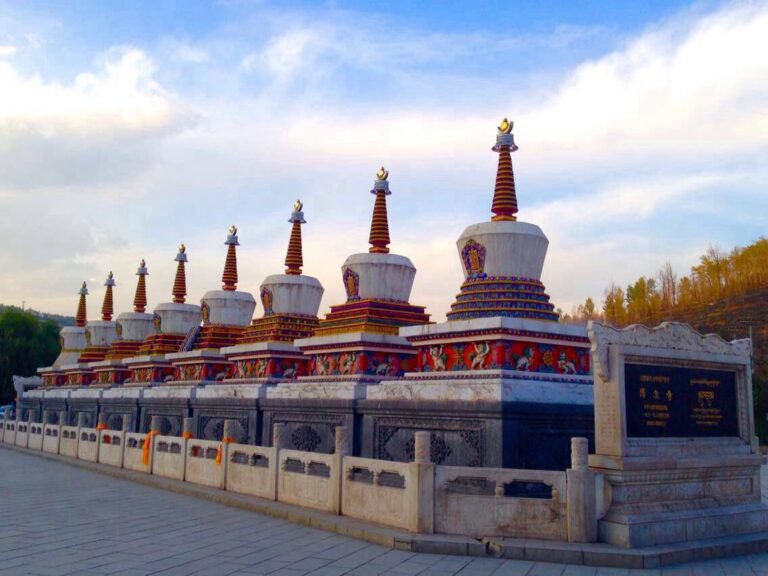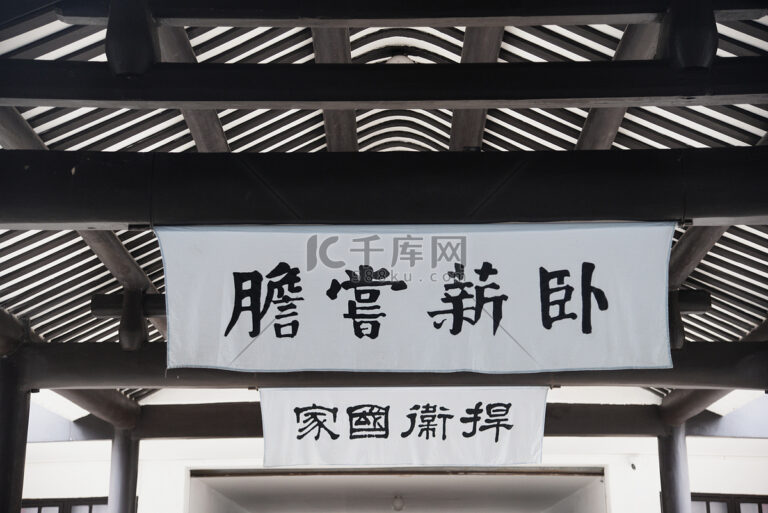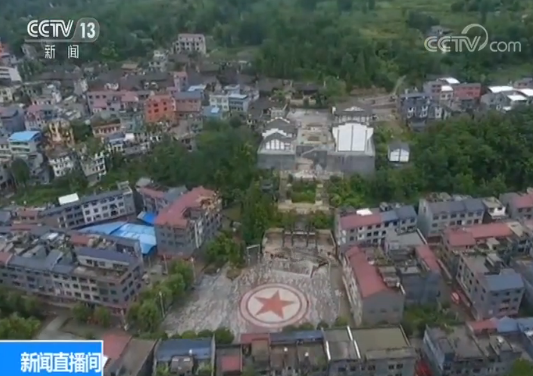Experience Ancient Wisdom at Beijing Dongcheng Guozijian: A Travel Guide
An Essential Guide to Visiting Beijing Dongcheng Guozijian
In This Guide
- An Essential Guide to Visiting Beijing Dongcheng Guozijian
- The Rich History of Beijing Dongcheng Guozijian
- Main Highlights: What to See at Beijing Dongcheng Guozijian
- Planning Your Visit: A Practical Guide
- Tickets, Hours, and Booking
- How to Get There
- Local Cuisine and Accommodation
- Frequently Asked Questions
- Final Thoughts on Your Trip
Nestled within the historic Dongcheng District of Beijing, Dongcheng Guozijian (国子监) stands as a testament to China’s rich academic heritage and cultural significance. This ancient site, often referred to as the Imperial Academy, has been a focal point of Confucian education since its establishment in the 14th century during the Yuan Dynasty. The meticulously preserved architecture and serene atmosphere invite visitors to explore a world where learning and reverence for tradition intertwine.
As one strolls along Guozijian Street, lined with charming courtyard homes and vibrant ginkgo trees, the echoes of scholars from centuries past resonate in the air. The area encompasses the renowned Confucius Temple, a sacred space dedicated to the veneration of the great philosopher, and the Guozijian itself, which served as the highest educational institution in imperial China. Together, they embody the essence of Confucian thought and the evolution of China’s educational landscape.
Visitors can immerse themselves in the profound tranquility of this cultural haven, where the ancient stone inscriptions and ornate archways tell stories of diligence, wisdom, and the pursuit of knowledge. Whether you’re an architecture enthusiast, a history buff, or simply in search of a serene escape from the bustling metropolis, Dongcheng Guozijian offers a unique glimpse into Beijing’s intellectual legacy and a chance to reflect on the enduring power of education.
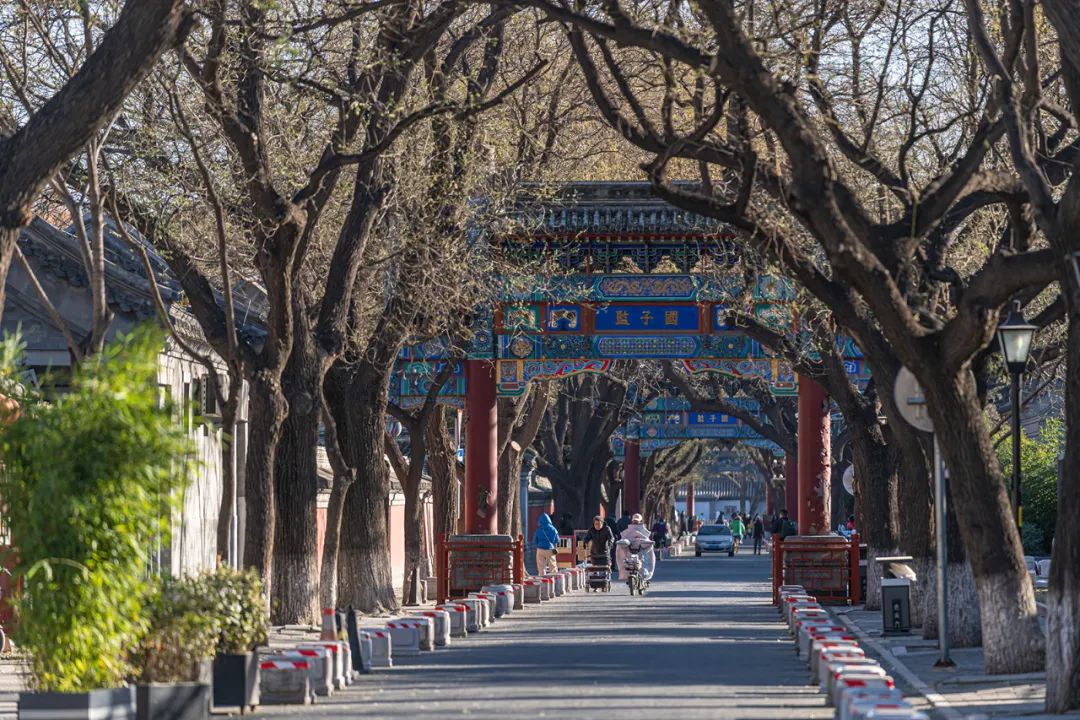
Beijing Dongcheng Guozijian.
The Rich History of Beijing Dongcheng Guozijian
Nestled within the heart of Beijing’s Dongcheng District, Dongcheng Guozijian (国子监) boasts a rich and storied past that stretches back over 700 years. Originally established during the Yuan Dynasty in 1306, it served as China’s highest educational institution for centuries, a function it retained through the Ming and Qing Dynasties. The name “Guozijian” translates to “Imperial Academy,” reflecting its esteemed role in the Confucian educational system.
The origins of Guozijian are deeply intertwined with the Confucian ideals that defined Chinese scholarship and governance. It was founded by Kublai Khan, the Mongol emperor, who recognized the necessity of cultivating a learned elite to administer his vast empire. Initially located near the Chongren Gate (present-day Dongzhimen), the institution was formally established alongside the nearby Confucius Temple, creating a dual structure of spiritual and academic reverence known as “left temple, right school” (左庙右学). This unique configuration symbolized the integration of Confucian philosophy into the educational system.
The Guozijian underwent significant renovations and expansions under various dynasties. During the Ming Dynasty, particularly under the Yongle Emperor, the academy was rebuilt and revitalized, solidifying its status as the apex of education in the capital. By this time, it had evolved from its original framework, adapting to the growing needs of the imperial bureaucracy and the evolving landscape of Chinese education.
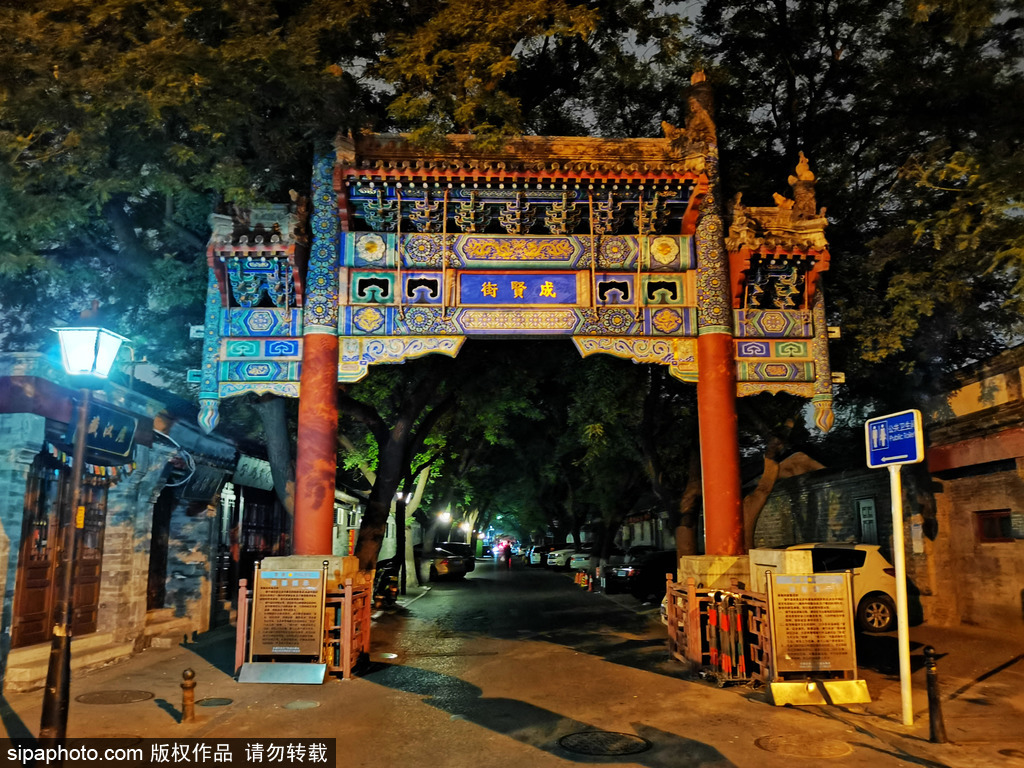
Beijing Dongcheng Guozijian.
In the Qing Dynasty, Guozijian continued to flourish, with the construction of notable buildings such as the Biyong Hall, which was designed for imperial lectures. This period saw the establishment of a comprehensive curriculum that included the study of the Confucian classics, poetry, and philosophy, serving as a training ground for future scholars and government officials. The academy also became a cultural melting pot, attracting students from various regions, including Korea and Vietnam, fostering an environment of intellectual exchange.
Despite its illustrious history, Guozijian faced challenges in the late 19th and early 20th centuries. The introduction of modern educational reforms led to its gradual decline, culminating in its official closure in 1905 during the Qing Dynasty. However, the legacy of Guozijian persisted, and in 1956, it was designated as a national cultural heritage site, ensuring its preservation for future generations.
Today, the Guozijian is not merely an educational relic; it stands as a testament to Beijing’s historical and cultural significance. The site includes not only the remains of the original academy but also the adjacent Confucius Temple, now functioning as the Confucius and Guozijian Museum. This museum showcases the deep-rooted traditions of Confucianism and the profound impact of education on Chinese society. Visitors can explore the meticulously preserved architecture, including the striking glazed-tile archway, and the ancient stone tablets that commemorate the names of successful candidates from the imperial examination system, reminding us of the enduring legacy of this remarkable institution.
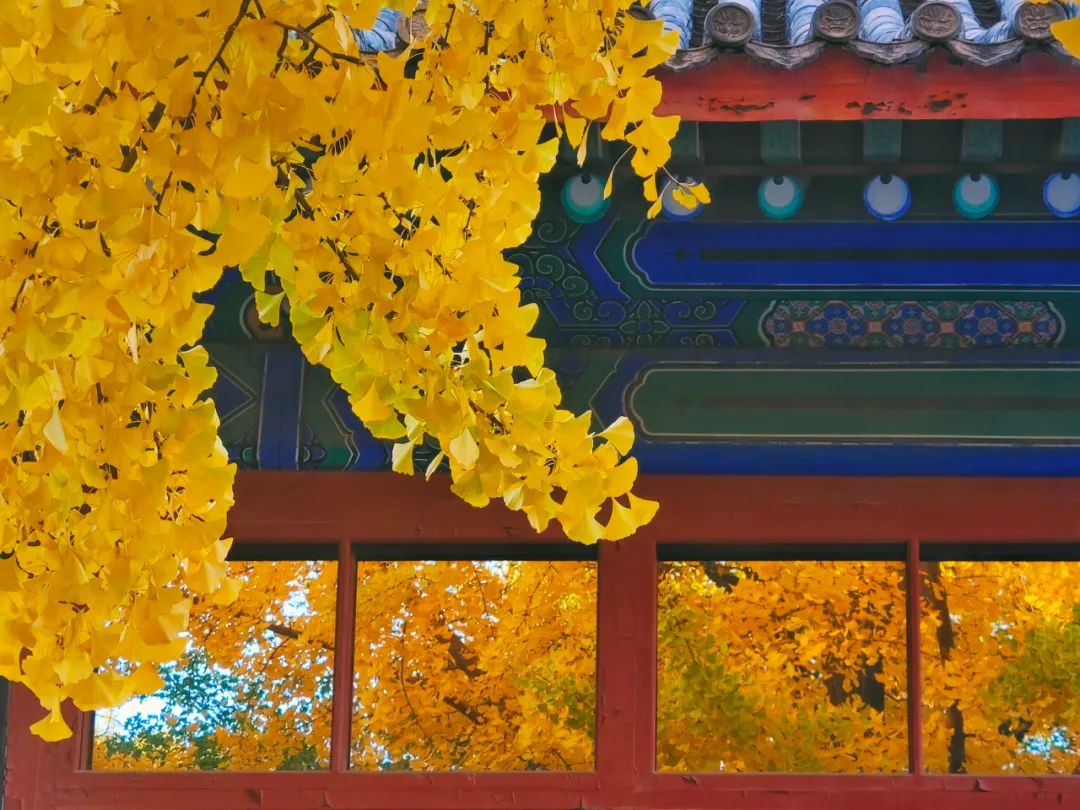
Beijing Dongcheng Guozijian.
In essence, Dongcheng Guozijian encapsulates a vital chapter in China’s educational history, intertwining the threads of Confucian scholarship and imperial governance, making it an essential part of Beijing’s cultural tapestry.
Main Highlights: What to See at Beijing Dongcheng Guozijian
Beijing’s Dongcheng Guozijian, also known as the Imperial Academy, is a treasure trove of Chinese history and culture that offers visitors a glimpse into the country’s educational heritage. Nestled in the heart of the city, this historic site is a must-visit for anyone interested in the rich legacy of Confucianism and ancient education.
Architectural Marvels
One of the standout features of Guozijian is its impressive architecture. The main building, known as the Biyong, was constructed during the Qing Dynasty and served as a lecture hall for emperors. Its unique circular design symbolizes the harmony of heaven and earth, while the elegant yellow glazed tiles reflect the imperial significance of education in Chinese history. The intricate carvings and the serene surrounding waters enhance the building’s majestic aura.
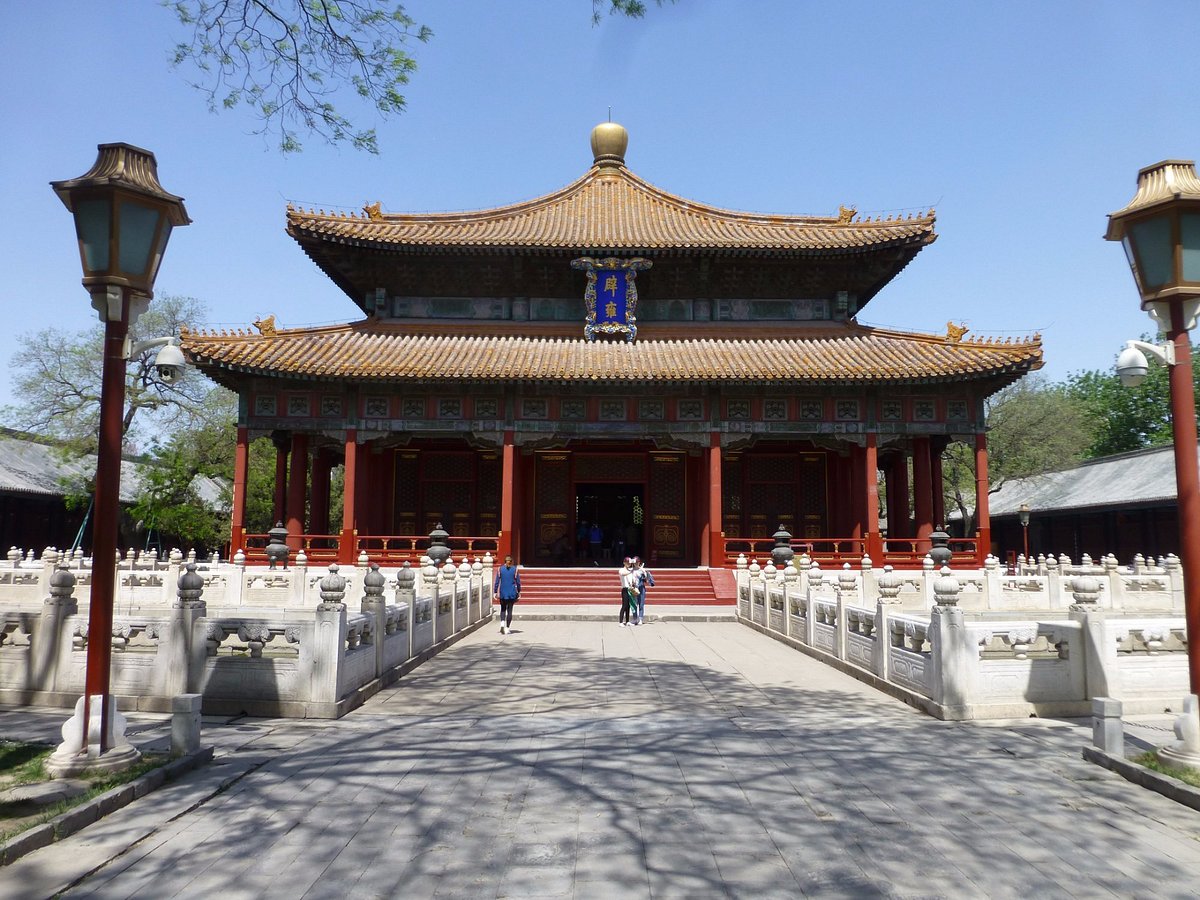
Beijing Dongcheng Guozijian.
Cultural Significance
As the highest institution of learning from the Yuan to the Qing Dynasties, Guozijian is deeply intertwined with China’s educational evolution. It was here that the brightest minds gathered to study the Confucian classics, shaping the moral foundation of Chinese society. Visitors can explore the Yilun Hall, which once housed ancient texts and served as a classroom for scholars, further emphasizing the academy’s role in preserving knowledge.
Historical Relics
The site is also home to the Stele Forest, featuring the names of thousands of successful candidates from the imperial examination system, reflecting the rigorous intellectual tradition of the time. Among these, the Scholar’s Stone, a monumental piece that documents the achievements of students over centuries, stands as a testament to the enduring spirit of learning in China.
The Confucius Temple
Adjacent to Guozijian lies the Confucius Temple, where emperors once paid homage to the great philosopher. The temple’s serene courtyards and ornate halls, adorned with ancient relics and artifacts from various dynasties, offer a tranquil retreat from the bustling city. Here, visitors can appreciate the profound influence of Confucian philosophy on Chinese culture and governance.
A Unique Blend of Old and New
In recent years, the area surrounding Guozijian has transformed into a vibrant hub for arts and culture, often referred to as “Coffee Street.” The charming lanes lined with quaint cafés and shops are perfect for a leisurely stroll, allowing visitors to soak in the local atmosphere while enjoying a cup of traditional Chinese tea or coffee.
Accessibility and Visitor Information
Open year-round and free of charge, Guozijian is easily accessible via public transportation, making it an ideal stop for both tourists and locals. A visit typically lasts about an hour, providing ample time to explore the site without feeling rushed.

Beijing Dongcheng Guozijian.
Whether you’re an avid historian, a lover of architecture, or simply looking to experience the essence of Chinese culture, the Guozijian and its surroundings present a captivating journey through time that is not to be missed.
Planning Your Visit: A Practical Guide
Nestled in the heart of Beijing’s Dongcheng District, Guozijian Street (国子监街) offers a fascinating glimpse into the city’s rich historical tapestry. This charming street, which stretches for 669 meters, is lined with traditional Beijing-style courtyard houses and is home to the renowned Confucius Temple and Guozijian (Imperial Academy). Here’s everything you need to know for a visit:
Best Time to Visit
Guozijian Street is a year-round destination, with each season offering its own unique charm. Spring brings blooming flowers, summer offers lush greenery, autumn showcases stunning foliage, and winter provides a tranquil atmosphere. A visit typically takes about an hour, making it easy to fit into any itinerary.
Admission Fees
Entry to Guozijian Street is free. However, if you wish to explore the Confucius Temple and the Guozijian Museum, a combined ticket is available for just 20 RMB, making it an affordable cultural outing.
Getting There
Reaching Guozijian Street is convenient via public transportation:
– Subway: Take Line 2 or Line 5 to Yonghegong (雍和宫) Station, which is a short walk away.
– Bus: Several bus routes service the area, including Line 13, 684, and multiple night routes that stop at Guozijian.
– Taxi: Taxis are widely available and can easily drop you at the entrance.

Beijing Dongcheng Guozijian.
What to See
-
Confucius Temple (孔庙): This impressive complex is dedicated to Confucius, the revered philosopher and educator. The main hall, Dacheng Hall, is adorned with traditional yellow glazed tiles and houses a statue of Confucius.
-
Guozijian (Imperial Academy): Once the highest educational institution in ancient China, Guozijian features stunning architecture, including the iconic Biyong Hall which was used for lectures by the emperor. The surrounding courtyards and historical relics provide an immersive experience into China’s educational history.
-
Historical Monuments: Look out for the stele forest, which features stone tablets inscribed with the names of successful scholars from various dynasties, a testament to the ancient imperial examination system.
-
Ancient Trees: The area is home to many ancient trees, including the famous “Jianjian Cypress,” believed to have witnessed centuries of history.
-
Cafes and Shops: Guozijian Street is also known as a trendy area for cafes and boutiques. Enjoy a cup of coffee in one of the charming cafes that perfectly blend modernity with tradition.
Tips for Visitors
- Photography: The street’s traditional architecture and serene atmosphere provide excellent photo opportunities, especially with the backdrop of ancient trees and historical buildings.
- Respect Traditions: As this is a culturally significant site, maintain a respectful demeanor, especially within the temple and academic spaces.
- Guided Tours: Consider joining a guided tour for deeper insights into the history and significance of the site, as local guides can share fascinating stories that might not be found in guidebooks.
Nearby Attractions
After exploring Guozijian Street, you may want to visit other nearby attractions such as:
– Yonghe Temple (Lama Temple): A short distance away, this Tibetan Buddhist temple is renowned for its stunning architecture and intricate sculptures.
– Beijing’s Historic Hutongs: Stroll through the nearby hutongs to experience traditional Beijing life and perhaps enjoy a local meal.
Conclusion
Guozijian Street is more than just a historical site; it’s a serene escape into China’s educational past, where the ancient meets the modern. With easy access, free admission, and rich cultural experiences, it’s a must-visit for anyone exploring Beijing. Don’t forget your camera and a curious mind!
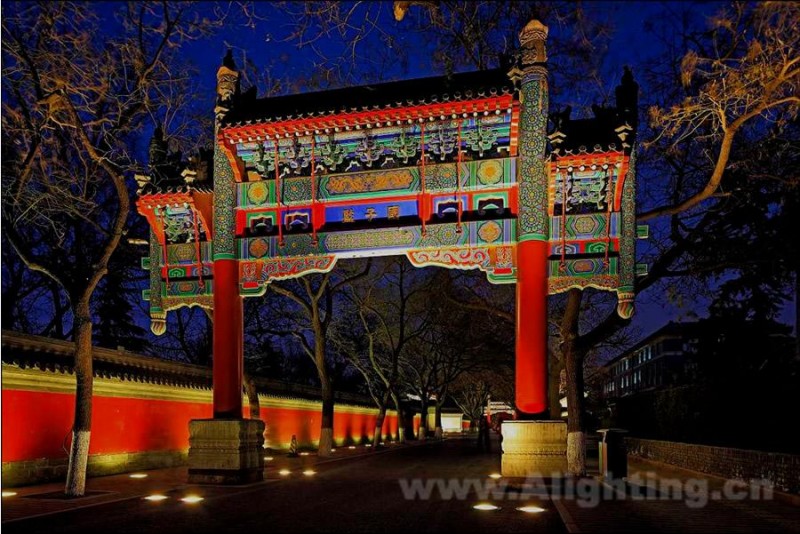
Beijing Dongcheng Guozijian.
Tickets, Hours, and Booking
Visiting the Beijing Dongcheng Guozijian (国子监) is an enriching experience that doesn’t come with a hefty price tag. Admission to the Guozijian and its associated Confucius Temple is incredibly affordable, with a ticket costing only 10 RMB (approximately $1.50 USD). This modest fee grants you access to explore one of China’s most significant historical and cultural sites.
The site is open to visitors year-round, with operational hours running from 8:30 AM to 4:30 PM. This makes it convenient for both early risers and those who prefer to enjoy the site in the afternoon.
For those traveling by public transport, the Guozijian is conveniently accessible via the Beijing Metro. You can take Line 5 to the Yonghegong (雍和宫) station, which is just a short walk away from the entrance. Alternatively, several bus routes serve the area, including routes 13, 116, 117, 124, and 807, providing ample options for reaching this historical landmark.
Whether you’re a history enthusiast or simply looking to immerse yourself in traditional Chinese culture, the Guozijian promises a fascinating glimpse into the past without breaking the bank.
How to Get There
When planning your visit to Beijing Dongcheng Guozijian (国子监), navigating the city’s transportation options is essential for a smooth experience. This historic area, known for its rich cultural heritage and serene beauty, is easily accessible through various means of transport.

Beijing Dongcheng Guozijian.
Public Transport
Subway:
The most convenient way to reach Guozijian is via the Beijing Subway. You can take Line 2 or Line 5 and alight at the Yonghegong (雍和宫) station. From there, it’s just a short walk to Guozijian Street. The subway system in Beijing is extensive, clean, and efficient, making it a popular choice for visitors.
Buses:
Several bus routes serve the Guozijian area, providing another accessible option:
– Route 13 and Route 684 take you directly to the Guozijian stop.
– Additionally, buses 104, 108, 124, 127, and several night routes such as Night 6, Night 18, and Night 34 stop at Fangjia Hutong, which is also within walking distance of Guozijian.
Walking
Once you arrive in the vicinity, exploring the area on foot is highly recommended. Guozijian and its surroundings, including the Confucius Temple, are pedestrian-friendly. The charming hutongs (narrow alleys) and historical architecture provide a delightful backdrop for a leisurely stroll. The entire area can be navigated in about an hour, allowing you to soak in the cultural atmosphere.
Taxi and Ride-Sharing
For those preferring a more direct route or traveling in a group, taxis are readily available throughout Beijing. Simply hail a cab or use a ride-sharing app like Didi, which is the Chinese equivalent of Uber. Ensure you have the destination written in Chinese to avoid any communication barriers with the driver.
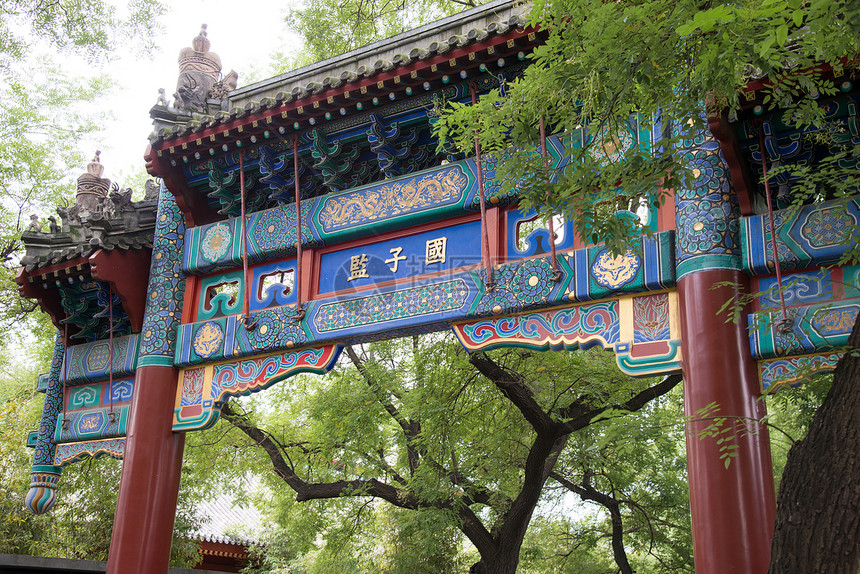
Beijing Dongcheng Guozijian.
Recommendations
- Best Time to Visit: The area is lovely year-round, but spring and autumn offer the most pleasant weather for exploring.
- Duration of Visit: Allocate approximately one hour for a visit to Guozijian, though you may want to linger longer to fully appreciate the architecture and ambiance.
With these transportation options, accessing Beijing Dongcheng Guozijian is straightforward, allowing you to immerse yourself in its cultural richness without any hassle.
Local Cuisine and Accommodation
When exploring the cultural heart of Beijing at Dongcheng’s Guozijian (国子监), visitors will find a delightful array of culinary and accommodation options that enhance the historical ambiance of this ancient location.
Culinary Delights
1. Local Snacks and Traditional Cuisine:
As you stroll along Guozijian Street, don’t miss the chance to indulge in authentic Beijing street food. Look for vendors serving jianbing (savory crepes) and baozi (steamed buns), perfect for a quick snack while soaking in the surroundings. For a more substantial meal, head to Qing Feng Steamed Bun Shop, famed for its fluffy baozi filled with various meats and vegetables.
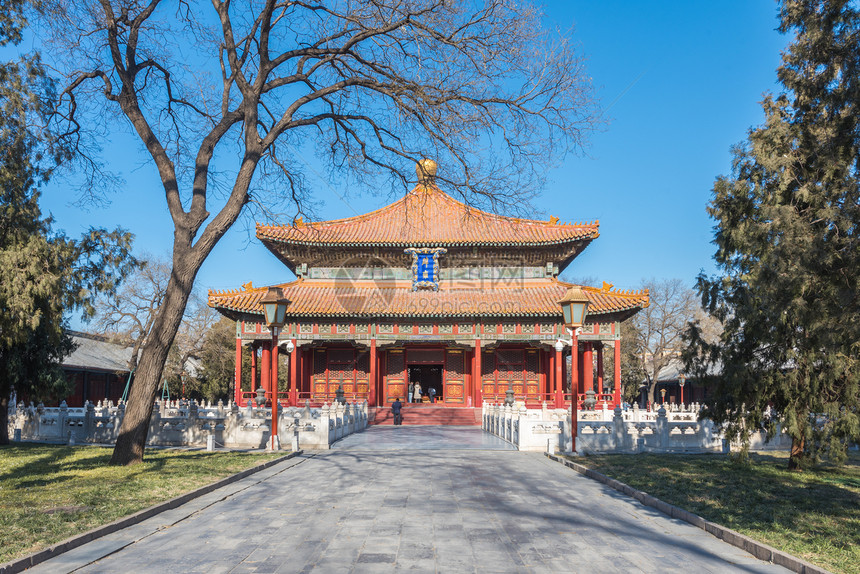
Beijing Dongcheng Guozijian.
2. Famous Peking Duck:
No visit to Beijing would be complete without tasting the legendary Peking duck. Da Dong Roast Duck Restaurant, located not far from Guozijian, is a must-try. Known for its crispy skin and succulent meat, Da Dong offers a modern twist on this classic dish, all served in a stylish setting.
3. Cozy Cafés:
Guozijian is also home to a burgeoning café scene. Café de la Poste is a charming French-inspired café that serves excellent coffee and pastries, making it an ideal spot to rest after a day of exploration. For a taste of local culture, Yuan’s Coffee offers a cozy atmosphere with a selection of artisan brews.
Where to Stay
1. Boutique Hotels:
For a unique experience, consider staying at one of Beijing’s boutique hotels in the Dongcheng district. Hotel Cote Cour Beijing is a beautifully restored courtyard hotel that captures the essence of traditional Beijing architecture. Its proximity to Guozijian makes it a convenient base for your adventures.
2. Guesthouses:
If you prefer a more intimate setting, the Wudaoying Hutong Guesthouse offers a cozy atmosphere in a historical hutong. With personalized service and a quaint courtyard, it provides a peaceful retreat from the bustling city life while still being a short walk from major attractions.
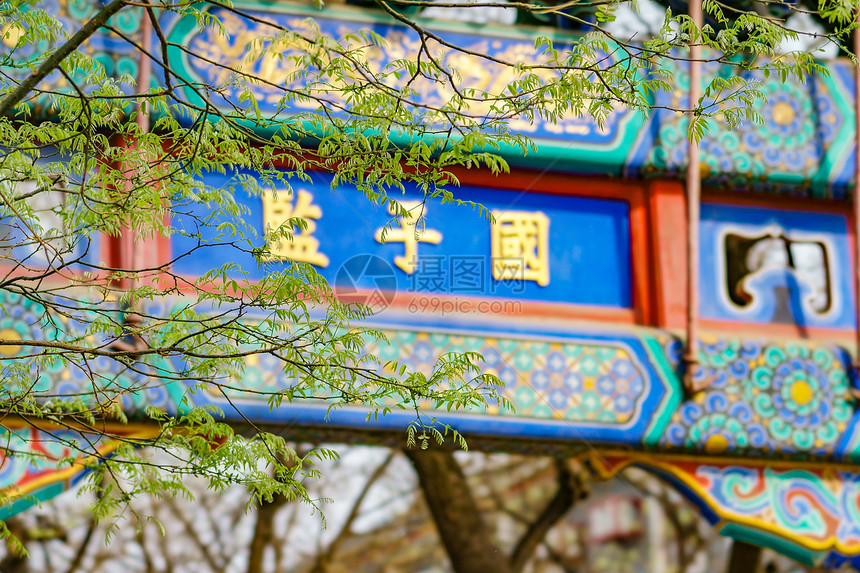
Beijing Dongcheng Guozijian.
3. Luxury Options:
For those seeking a luxurious stay, The Opposite House in Sanlitun is a short drive from Guozijian. This five-star hotel boasts contemporary design, top-notch amenities, and a world-class restaurant, making it an excellent choice for travelers looking for comfort and elegance.
Conclusion
Whether you’re savoring traditional Peking duck, enjoying a cup of coffee in a quaint café, or unwinding in a boutique hotel, the food and accommodation options near Guozijian provide a perfect blend of local culture and modern comforts, making your visit to this historic site even more memorable.
Frequently Asked Questions
-
What is the best time to visit Guozijian (国子监)?
You can visit Guozijian year-round. The site is particularly beautiful during the spring and autumn months when the weather is mild and the foliage is vibrant. -
How much does it cost to enter Guozijian?
Admission to Guozijian is free, making it an accessible destination for all visitors. -
How long should I plan to spend at Guozijian?
A visit typically lasts about one hour, which is sufficient to explore the main attractions and soak in the historical ambiance. -
What are the main attractions within Guozijian?
Key sites include the Confucius Temple (Kong Miao), the main hall (Biyong), and the stele forest featuring inscriptions of the names of successful candidates from ancient imperial examinations. -
How do I get to Guozijian using public transportation?
You can take the Beijing Subway Line 5 or Line 2 and get off at Yonghegong Station (雍和宫). Alternatively, several bus routes including 13, 684, and 104 also stop nearby. -
Is Guozijian accessible for people with mobility challenges?
While many areas are accessible, some historical structures may have steps and uneven pathways. It’s advisable to check specific accessibility options when planning your visit. -
Are there facilities for tourists at Guozijian?
Guozijian offers basic facilities, including restrooms and information signage. However, it’s advisable to carry your own water and snacks, as there are limited dining options in the immediate vicinity. -
Can I take photos at Guozijian?
Yes, photography is allowed, and the picturesque scenery, including traditional architecture and serene gardens, provides excellent opportunities for memorable photos.
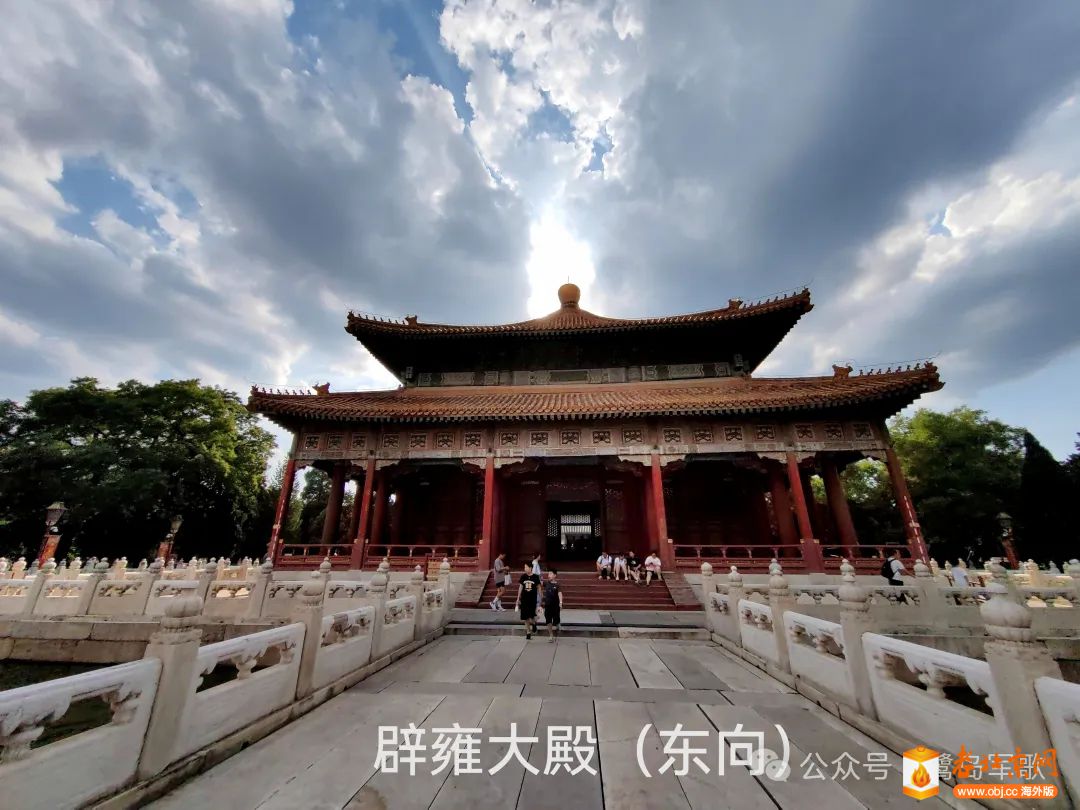
Beijing Dongcheng Guozijian.
Final Thoughts on Your Trip
Visiting the Guozijian (国子监) in Beijing is more than just a stroll through ancient halls; it’s a journey into the heart of Chinese culture and history. This remarkable site, home to the last imperial academy and the revered Confucius Temple, offers a unique glimpse into the educational and philosophical foundations that shaped a nation. Whether you’re an avid history buff or simply seeking a serene escape from the bustling city, the lush surroundings and the architectural grandeur of Guozijian will leave you in awe.
As you explore the intricacies of its structures, from the towering glazed archways to the elegant libraries, take a moment to reflect on the countless scholars who walked these grounds, shaping the intellectual landscape of China. The peaceful ambiance invites contemplation, making it an ideal spot for quiet reflection or simply soaking in the rich atmosphere.
With free entry and easy access via public transport, Guozijian stands as a testament to Beijing’s vibrant past, beckoning travelers to uncover the stories etched into its stones. So, whether you’re snapping photos of the iconic architecture or delving into the depths of Confucian philosophy, Guozijian promises an enriching experience that resonates long after your visit. Embrace the wisdom of the ages in this cultural treasure, and let your journey through time begin.

